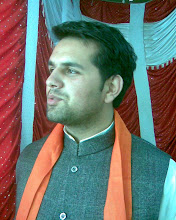
There is something wrong with growth economics. After all, 18 years after India ushered in economic Liberalization, the promise of high growth to reduce poverty and hunger, has not worked. A report by Suresh Tendulkar, formerly chairman of Prime Minister's Economic Advisory Council, now estimates poverty at 37.2 per cent, an increase of roughly 10 per cent over the earlier estimates of 27.5 per cent in 2004-05. This means, an additional more than 100 million people have slipped below the poverty line in just four years. The number of poor is multiplying at a time when the number of billionaires has also increased. The economic wealth of Mere 30-odd rich families in India is equivalent to one third of the country's growth. The more the wealth Accumulating in the hands of these 30 families, the more will be country's economic growth. If you were to discount the economic growth resulting from the 6th pay commission, which is 1.9 per cent of the GDP, India's actual economic growth will slump to 4 per cent. reality is that the complicated arithmetic hides more than what it reveals. Poverty estimates were earlier based on nutritional criteria, which means based on the monthly income required to purchase 2,100 calories in the urban areas and 2,400 calories in the rural areas. Over the years, this measure came in for sharp criticism, and finally the Planning Commission suggested a new estimation method that is required to survive - includes food, fuel, light, clothing and footwear. Accordingly, the Tendulkar committee has worked out that 41.8 per cent of the population or approximately 450 million people survive on a monthly per capita consumption expenditure of Rs 447. In other words, break it down to a daily expenditure; it comes to bare Rs 14.50 paise. I wonder how cans the rural population earning more than Rs 14 and less than say even Rs 25 a day is expected to be over the poverty line. India's poverty line is actually a line of starvation I can say. The poverty line that is laid out actually becomes the upper limit the government must pledge to feed. People living below this line constitute the Below the Poverty Line (BPL) category, for which the government has to provide a legal guarantee to provide food. It therefore spells out the government subsidy that is required to distribute food among the poor. More the poverty line more is the food subsidy. If the government accepts Tendulkar committee report, the food subsidy bill will swell to Rs 47,917.62-crore, a sharp rise over the earlier subsidy of Rs 28,890.56-crore required to feed the BPL population with 25 kg of grains. This is primarily the reason why the government wants to keep the number of poor low. In other words, the poverty line reflects the number of people living in hunger. So poverty is not only empty pocket but here it means acute hunger. India's poverty estimates therefore are the most stringent in the world. I don't know the economic justification of hiding the true figures, but politically it makes terrible sense. Each government therefore is happy to gloss over the starvation figures in the guise of poverty estimates. I wonder when India will include a basket of essential good like footwear, cycles, sewing machines, solar lamps, water purifiers etc for the poor. This is simple economics, and not political compulsion as the media will like us to believe. Going back to the poverty line arithmetic, the 2007 Arjun Sengupta committee report (officially the report of the National Commission on Enterprise in Unorganized Sector), which had estimated that 77 per cent of the population or 836 million people, were unable to spend more than Rs 20 a day, is probably a correct reflection of the extent of prevailing poverty. In addition to monthly income, poverty estimates must incorporate the human development index as prepared by the United Nations Development Programme. India should therefore have two ways to classify the poor. The line of starvation, needing direct cash transfers in addition to the basic requirement of food supplies. And a Poverty line, needing not only food (but in lesser quantities) but also other economic necessities like sewing machines, water-purifiers, pressure cookers, etc. Saurabh Chauhan

A good observation. There is one more aspect to be noted here, which goes unnoticed or even glossed over some times. The earnings of the farmer are being siphoned off by multinationals, by hiking the cost of seeds, fertilizers and pesticides. Our farmers have been made dependent on these by the dubious governmental promotions of these items.
ReplyDeleteOnce chemical fertilizers are used the land slowly degrades and loses its natural fertility and hence the next time more fertilizers are required to get the same yield. Simultaneously the requirement of water also increases, thus increasing the cost of pumping water. When more water is pumped the water table goes down requiring more energy to pump. All this has become a vicious circle and the end result is farmer suicides.
Indirectly our rural economy has become slave to the multinationals, actively supported by our government.
A good observation. There is one more aspect to be noted here, which goes unnoticed or even glossed over some times. The earnings of the farmer are being siphoned off by multinationals, by hiking the cost of seeds, fertilizers and pesticides. Our farmers have been made dependent on these by the dubious governmental promotions of these items.
ReplyDeleteOnce chemical fertilizers are used the land slowly degrades and loses its natural fertility and hence the next time more fertilizers are required to get the same yield. Simultaneously the requirement of water also increases, thus increasing the cost of pumping water. When more water is pumped the water table goes down requiring more energy to pump. All this has become a vicious circle and the end result is farmer suicides.
Indirectly our rural economy has become slave to the multinationals, actively supported by our government.
Really gud
ReplyDelete